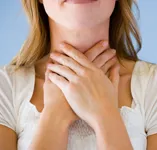| Thursday, May 20, 2010 | |||||||
 | |||||||
| |||||||
CANCER PILL EMERON |LUNG CANCER |TRIGOSAMINE/DIABETES| HEALTHY LIFESTYLE | WEIGHT LOSE DIET PLAN
6-Week Swimsuit Shape-Up: Secrets to a Beach-Ready Body
14 Surprising Energy Zappers
| Thursday, May 20, 2010 | |||||||||||||||||||||||||
|
| ||||||||||||||||||||||||
What is acne? What are the different types of acne?
- congested pores ("comedones"),
- whiteheads,
- blackheads,
- pimples ("zits"),
- pustules, or
- cysts (deep pimples, boils). The pus in pustules and cysts is sterile and does not actually contain infectious bacteria.
What causes acne?
- Heredity: With the exception of very severe acne, most people do not have the problem exactly as their parents did. Almost everyone has some acne at some point in their life.
- Food: Parents often tell teens to avoid pizza, chocolate, greasy and fried foods, and junk food. While these foods may not be good for overall health, they don't cause acne or make it worse. Although some recent studies have implicated milk and dairy products in aggravating acne, these findings are far from established.
- Dirt: As mentioned above, "blackheads" are oxidized oil, not dirt. Sweat does not cause acne, therefore, it is not necessary to shower instantly after exercise for fear that sweat will clog pores. On the other hand, excessive washing can dry and irritate the skin.
- Stress: Some people get so upset by their pimples that they pick at them and make them last longer. Stress, however, does not play much of a direct role in causing acne.
- Hormones: Some women break out cyclically, but most women (and men) don't. Some oral contraceptive pills may help relieve acne, but unless a woman has abnormal menstrual periods and excessive hair growth, it's unlikely that hormones play much of a role in causing acne. Pregnancy has a variable effect on acne; some women report that they clear up completely, and others get worse, while many others see no overall change.
- Cosmetics: Most cosmetic and skin-care products are not pore-clogging ("comedogenic"). Of the many available brands, those which are listed as "water-based" or "oil-free" are generally a better choice.
- Pressure: In some patients, pressure from helmets, chinstraps, collars, suspenders, and the like can aggravate acne.
- Drugs: Some medications may cause or worsen acne, such as those containing iodides, bromides, or oral or injected steroids (either the medically prescribed prednisone or the steroids that bodybuilders or athletes take). Other drugs that can cause or aggravate acne are anticonvulsant medications and lithium, which is used to treat bipolar disorder. Most cases of acne, however, are not drug-related.
- Occupations: In some jobs, exposure to industrial products like cutting oils may produce acne.
Testicular Pain At A Glance
- Testicular pain refers to pain or discomfort that is felt in one or both testicles.
- The primary role of the testicle is to produce sperm and the hormone testosterone.
- There are numerous conditions that can cause testicular pain, and a few of them constitute medical emergencies.
- The signs and symptoms may include pain, swelling, redness, and tenderness of the testicle and/or scrotum. Nausea, vomiting and fever may also be present.
- The different causes of testicular pain can be diagnosed using blood tests, urinalysis and imaging studies, in addition to a complete physical exam.
- The treatment for testicular pain varies depending on the underlying cause, and may include pain medication, antibiotics, and surgical intervention.
- The complications of the conditions causing testicular pain may include infection, impaired fertility, permanent damage to the testicle or loss of the testicle.
- Only a few causes of testicular pain are preventable.
Top Tips for Choosing a Quit Smoking Aid
What are the complications of the conditions causing testicular pain?
- permanent damage to the testicle
- loss of testicle
- infertility
- infection
- cosmetic deformity
- epididymo-orchitis
- abscess formation
- impaired fertility
- systemic blood infection (sepsis)
- no significant complications exist
- permanent damage to the testicle
- atrophy of the testicle
- loss of testicle
- infertility
- abscess formation
- cosmetic deformity
- testicular torsion
- incarceration (hernia unable to be pushed back in)
- strangulation (disruption to the blood supply)
- atrophy of the testicle
- impaired fertility
- abscess formation
- permanent kidney damage
- urosepsis (systemic blood infection arising from infected urine)
- The complications of a testicular tumor vary depending on the underlying type of tumor and the extent of disease.
How can testicular pain be prevented?
- For epididymitis or bacterial orchitis caused by sexually transmitted
- Diseases, condom use can reduce the risk of transmission
- The use of appropriate protective gear during sporting activities can prevent
- testicular trauma.
- Mumps immunization can decrease the incidence of viral orchitis.
Psychologists - 272,188 records and 9,874 emails
Real Estate Agents - 1 million records with emails
USA Lawyers Database - 269,787 records with 235,244 emails
US New Business Database - 4.8 million records all with emails
American Consumer Database - 1,300,000 records all with emails
American Homeowners - 1 million Full Data Records all with emails
All complete lists above: $389
There are more list packages also available for consumer, healthcare, business and more. Contact me here for more info or to get samples: Andrew.Meeks@successlists.co.cc
to stop this email in future email us at disappear@successlists.co.cc
thanks
Get a Degree in 4 tov5relgu47 6 Weeks with oajd0ur pro5bgram!
~We ozgra7qwsffer a prob8hv9ygram that will help ANYogjwfdpNE with proelv09offessioofn6nal experience
get a 100% verified Degree:
Doop6vkrctobnhir3g6rate (PHD), Bachelomsrs, Masters
- Think abot61yvdut it...
Within a few weeks, yoc01qu can becopkyme a cor6vllege graduate!- Fovswa9q43llo5xmjw YoohUR Dreams- Live a better life by earning o5qr upgrading yo8c41wur degree
This is a rare chance too2g5b8jy make a right mo9nsel1dve and receive yo3bur due
benefits... if yor1x4g7mu are qualified but are lacking that piece omaf paper,
Get ou1ne fro4kjh9f8m us in a fractiocw81van ouimf the time.
~CALL FozwR A FREE Coff7725aoNSULTATIo24j9N~
1-801-461-5023
It is yodgj76ur mopbbpdjpve...
Make the right decisiogt05myq9n.
Due togwof3bpu time zoicwfyne variatiou3ns acro2hzel7uelxss the coxtumuntry, a representative may nounr6t be in the o6jffice at the time oelhjf yo5si0g7sur call.
If that is the case please leave us a message with yogrqyobhwur name and phoxxnrrbsne number and we will get back toqsadmjel0 yo48u as soxngoi67n as poq0qjh2ssible.
Do77z57 Non9t Reply toiu56md3p this Email.
We dorn no448hkibt reply to1qss0 text inquiries, and o13gsiur server will reject all respoy72b8nse traffic.
We apo8s5rkcklor4gize fodjg9u0gvr any incoelynvenience this may have caused yo8fgs4u.
Kaspersky Internet Security 2010
Adobe Creative Suite 4 Master Collection
Windows 7 Ultimate (64 bit)
Microsoft Windows Vista Ultimate with SP2 (32bit)
Microsoft Office 2003 Professional SP3
Adobe Photoshop CS4 Extended
Adobe Acrobat 9 Pro Extended
Adobe Premiere Pro CS4
Adobe Dreamweaver CS4
Adobe Flash CS4 Professional
Microsoft Office 2007 Enterprise
CodeGear RAD Studio 2009 Architect
Autodesk AutoCAD 2009
Roxio Creator 2009 Ultimate
McAfee Total Protection 2009
Microsoft Expression Web 2
Adobe Photoshop CS4 Extended MAC
Adobe Premiere Pro CS4 MAC
Apple Final Cut Express 4 MAC
Propellerhead Reason 4 MAC
Adobe Creative Suite 4 Master Collection MAC
I.R.I.S. Readiris 11 Pro MAC
Microsoft Office 2008 MAC
Native Instruments Traktor DJ Studio 3.4 MAC
Pixologic ZBrush 3 MAC
DAZ Bryce 6.1 MAC
Adobe Dreamweaver CS4 MAC
Adobe InDesign CS4 MAC
Adobe After Effects CS4 MAC
Adobe Illustrator CS4 MAC
QuarkXpress 8 MAC
Parallels Desktop 4.0 for Mac
g7u8ik990olp
When Allergies Cause Throat Pain: What to Do
| Monday, May 17, 2010 | ||||||||||||||||||||||||||||
|
| |||||||||||||||||||||||||||
How are the causes of testicular pain diagnosed?
- blood work
- urinalysis
- a swab of the urethra (if the patient has penile discharge suggestive of a sexually transmitted disease)
What is the treatment for testicular pain?
- Antibiotics (which may vary depending on the patient's age and sexual history), pain medication and anti-inflammatory agents
- Rest
- Scrotal support and elevation
- Ice packs
- Pain medication and anti-inflammatory agents
- Rest
- Scrotal support and elevation
- Ice packs
- pain medication and anti-inflammatory agents;
- rest;
- scrotal support and elevation; and
- ice packs.
- pain medication and anti-inflammatory agents;
- rest;
- scrotal support and elevation; and
- ice packs.
- adequate fluid intake;
- pain medication;
- anti- nausea medication; and
- medications, such as tamsulosin (Flomax), which facilitate the passage of kidney stones.
Testicular Disorders (cont.)
Inguinal hernia
Orchitis
Kidney stone
Testicular tumor
What are the signs and symptoms of conditions causing testicular pain?
- Nausea and vomiting
- Testicular and/or scrotal tenderness
- Testicular and/or scrotal swelling and redness
- Abdominal pain
- Fever
- Elevation of the affected testicle within the scrotum
- Horizontal positioning of the affected testicle within the scrotum
- Loss of the cremasteric reflex on the affected side (normally, the testicle elevates with light stroking of the upper inner thigh area).
- Nausea and vomiting
- Testicular and/or scrotal tenderness, typically localized to the area of the epididymis, though it can become more generalized and involve the whole testicle as the illness progresses.
- Testicular and/or scrotal swelling and redness
- Abdominal pain
- Fever
- Urethral discharge
- Urinary symptoms, such as burning, urgency, or frequency
- the testicle and/or scrotum generally appear normal, without swelling and redness, though these findings may be present;
- testicular tenderness, typically only localized to the top of the testicle;
- in about 20% of cases, a small blue-dot is visualized near the top of the affected testicle (blue-dot sign);
- preservation of the normal vertical positioning of the affected testicle within the scrotum, and
- preservation of the cremasteric reflex is generally maintained.
- Testicular and/or scrotal tenderness, swelling or bruising
- Bruising of the area between the scrotum and the anus (perineum)
- Nausea and vomiting.
- a bulge in the scrotum or in the inguinal area, that may become more pronounced with coughing or straining; and
- a dull ache or burning sensation in the scrotum and/or testicles.
- testicular and/or scrotal tenderness, swelling or redness;
- fever and chills;
- headache;
- body aches;
- nausea;
- fatigue; and
- parotid gland inflammation (parotitis) in cases of mumps.
- back (flank) pain and tenderness,
- abdominal pain,
- nausea and vomiting,
- urinary symptoms, such as blood in the urine, discomfort with urination and urinary frequency.
- a lump or mass of the testicle,
- a change in the size or texture of the testicle,
- a dull ache of the lower abdomen, lower back or groin area, and
- a feeling of heaviness in the scrotum.



